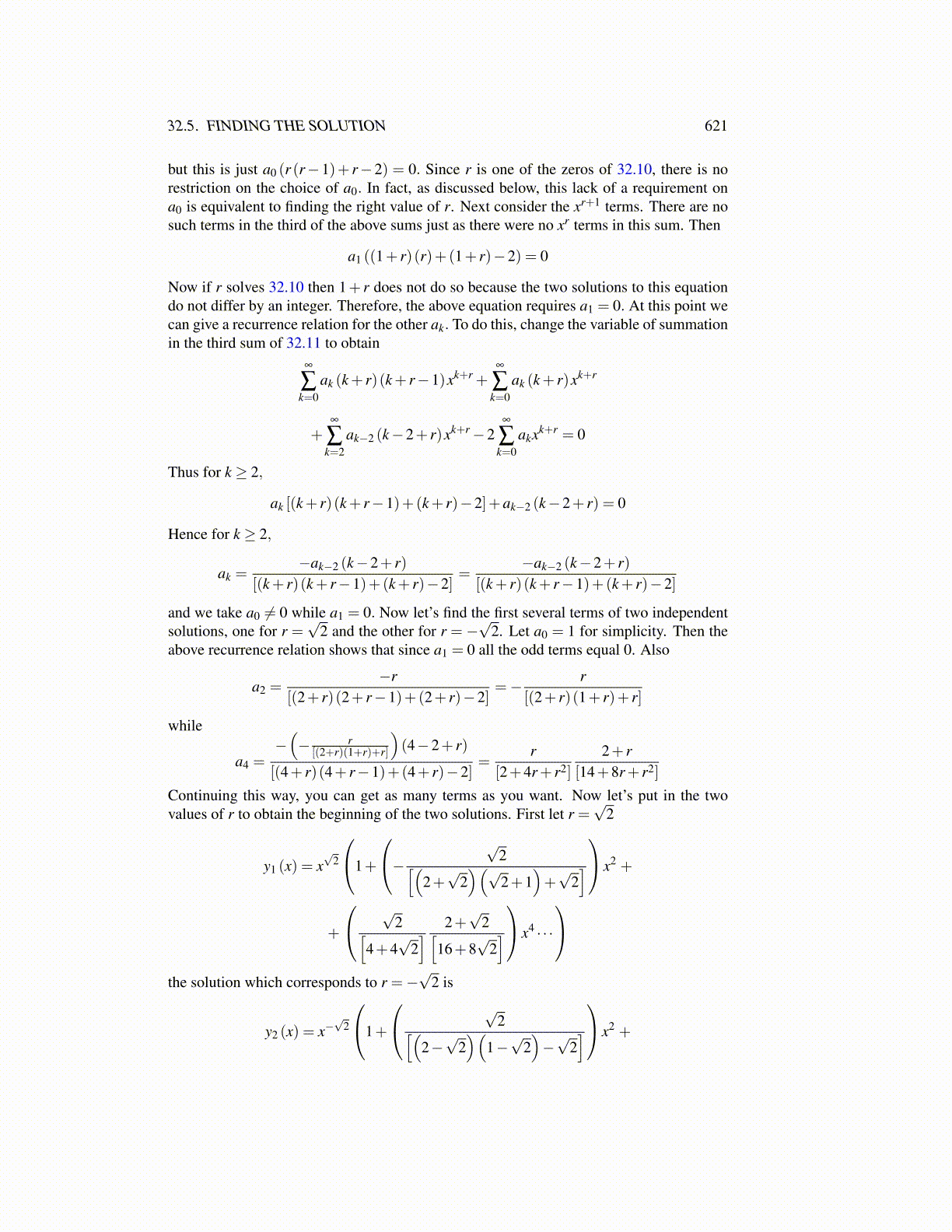
32.5. FINDING THE SOLUTION 621
but this is just a0 (r (r−1)+ r−2) = 0. Since r is one of the zeros of 32.10, there is norestriction on the choice of a0. In fact, as discussed below, this lack of a requirement ona0 is equivalent to finding the right value of r. Next consider the xr+1 terms. There are nosuch terms in the third of the above sums just as there were no xr terms in this sum. Then
a1 ((1+ r)(r)+(1+ r)−2) = 0
Now if r solves 32.10 then 1+ r does not do so because the two solutions to this equationdo not differ by an integer. Therefore, the above equation requires a1 = 0. At this point wecan give a recurrence relation for the other ak. To do this, change the variable of summationin the third sum of 32.11 to obtain
∞
∑k=0
ak (k+ r)(k+ r−1)xk+r +∞
∑k=0
ak (k+ r)xk+r
+∞
∑k=2
ak−2 (k−2+ r)xk+r−2∞
∑k=0
akxk+r = 0
Thus for k ≥ 2,
ak [(k+ r)(k+ r−1)+(k+ r)−2]+ak−2 (k−2+ r) = 0
Hence for k ≥ 2,
ak =−ak−2 (k−2+ r)
[(k+ r)(k+ r−1)+(k+ r)−2]=
−ak−2 (k−2+ r)[(k+ r)(k+ r−1)+(k+ r)−2]
and we take a0 ̸= 0 while a1 = 0. Now let’s find the first several terms of two independentsolutions, one for r =
√2 and the other for r = −
√2. Let a0 = 1 for simplicity. Then the
above recurrence relation shows that since a1 = 0 all the odd terms equal 0. Also
a2 =−r
[(2+ r)(2+ r−1)+(2+ r)−2]=− r
[(2+ r)(1+ r)+ r]
while
a4 =−(− r
[(2+r)(1+r)+r]
)(4−2+ r)
[(4+ r)(4+ r−1)+(4+ r)−2]=
r[2+4r+ r2]
2+ r[14+8r+ r2]
Continuing this way, you can get as many terms as you want. Now let’s put in the twovalues of r to obtain the beginning of the two solutions. First let r =
√2
y1 (x) = x√
2
1+
− √2[(
2+√
2)(√
2+1)+√
2]x2 +
+
√2[
4+4√
2] 2+
√2[
16+8√
2]x4 · · ·
the solution which corresponds to r =−
√2 is
y2 (x) = x−√
2
1+
√2[(
2−√
2)(
1−√
2)−√
2]x2 +